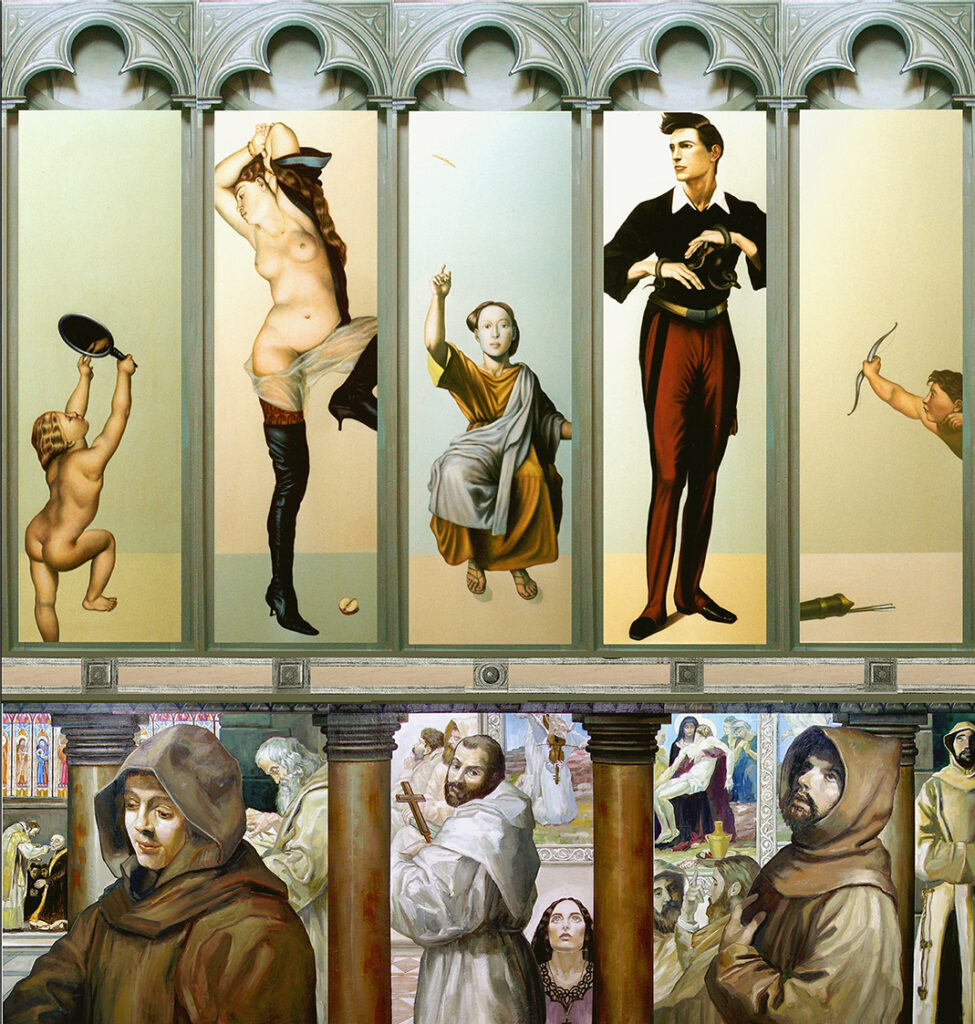The Conversion of Maria M. (315 x 300 cm)
Materials: Oil on canvas.
Symbolism: The church, the Apocrypha, the controversial role of Mary, the holy family and the liturgy.
The Painting:
Above: The Holy Family dressed in a modernistic way.
The interpretation changes along with the time spirit but intrinsically stays the same. So, at the same time Josef and Mary reflect, are imagined as, Adam and Eve. The source of the crusade. Disobedience which forced God to sacrifice his son. The man plays in a naive manner with the serpent and the woman turns away from the prohibited fruit, she has eaten from. She gets a mirror passed.
Anyone who listens to the word but does not do what it says is like a man who looks at his face in a mirror. James 1:23 The reflection is a symbol of duality. She knows of good and evil now and he was her accomplishment. A cupid shoots a love arrow. And Adam knew Eve his wife; and she conceived… Genesis 4:1. The divine comedy has started.
The rectangles in which the Holy Family is placed have the dimensions 0.5 x 1.618. Half the Phi ratio or Guilder cut proportion. So, the proportion is half divine and refers to Christ. Five is also the number of the Torah, 5 books and symbolize the Jewish – Christian world. Moreover, Christ himself was a Jew.
Under: The monks, moving in a flow through the house of God. The dimensions of the areas between the pillars, who support the Holy Family, are entirely in accordance with the Phi ratio. Unchanged divine proportions throughout the centuries. Paintings of monks of Andrea del Sarto (15/16th century), Zurbaran (16/17th cent.), Rembrandt (17th cent.) and Goya (18/19th cent.) have stand model for that immutability all over the centuries. The archetype of contemplation, dogmatism and liturgy.

